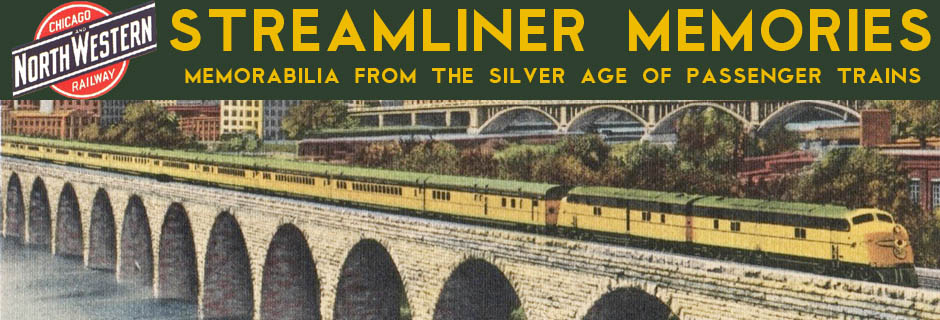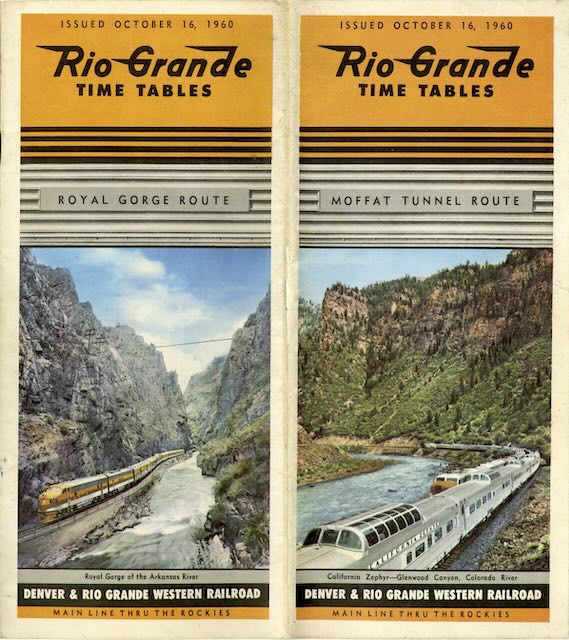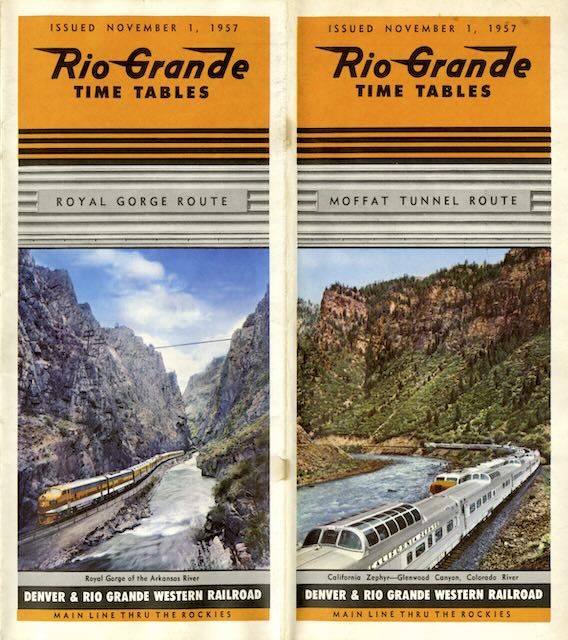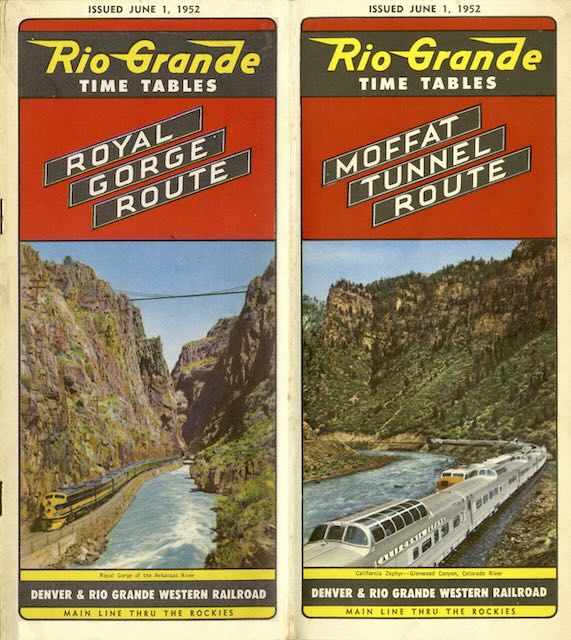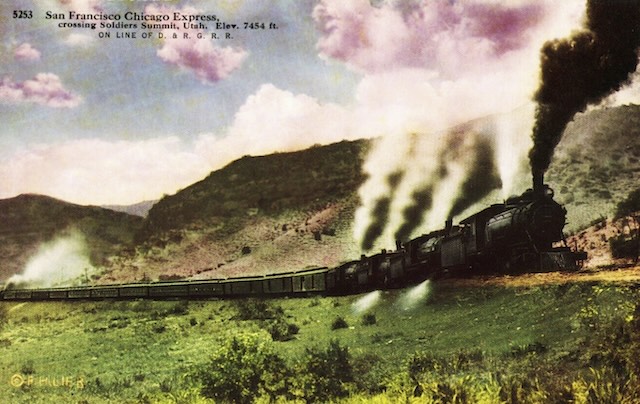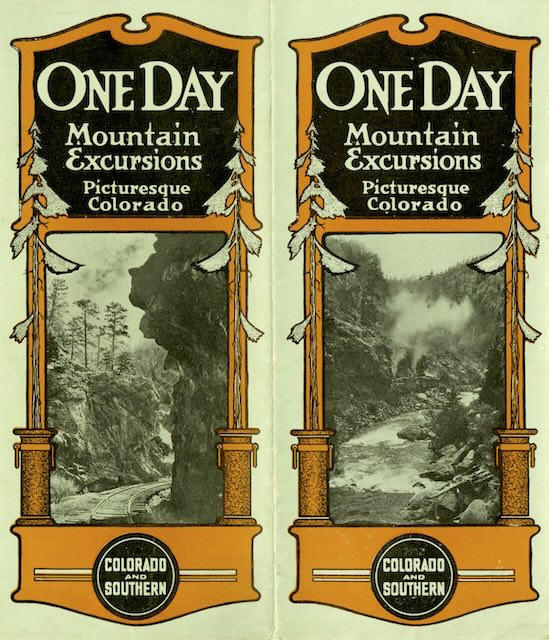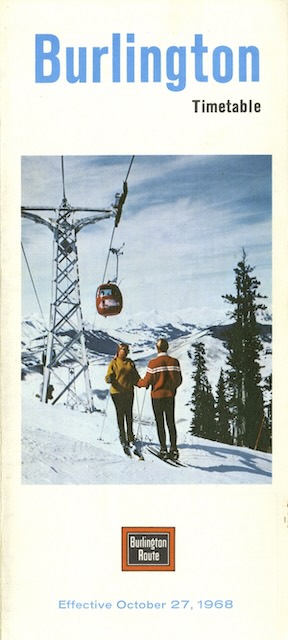Western Pacific operated two passenger trains in 1949. The California Zephyr was numbered 17 & 18, consistent with the numbers used by the Burlington and Rio Grande. The other train was numbered 1 and 2. It was a remnant of (and used the numbers of) the Royal Gorge, but that train attracted so few riders after the Zephyr was introduced that Western Pacific dropped the name. Just before this timetable was issued, it had applied to the Interstate Commerce Commission to drop the train completely.
 Click image to download a 4.3-MB PDF of this 8-page timetable.
Click image to download a 4.3-MB PDF of this 8-page timetable.
The Zephyr made nine stops between Oakland and Salt Lake City. Train 1 & 2 made as many as 38 more, some of them as little as three miles apart from one another. Despite all the extra stops, train 1 & 2 took only about five hours more than the Zephyr to make the trip. Many, if not most, of its passengers were railroad employees and it also carried mail, food, and supplies to many of the small communities on its route. Continue reading
